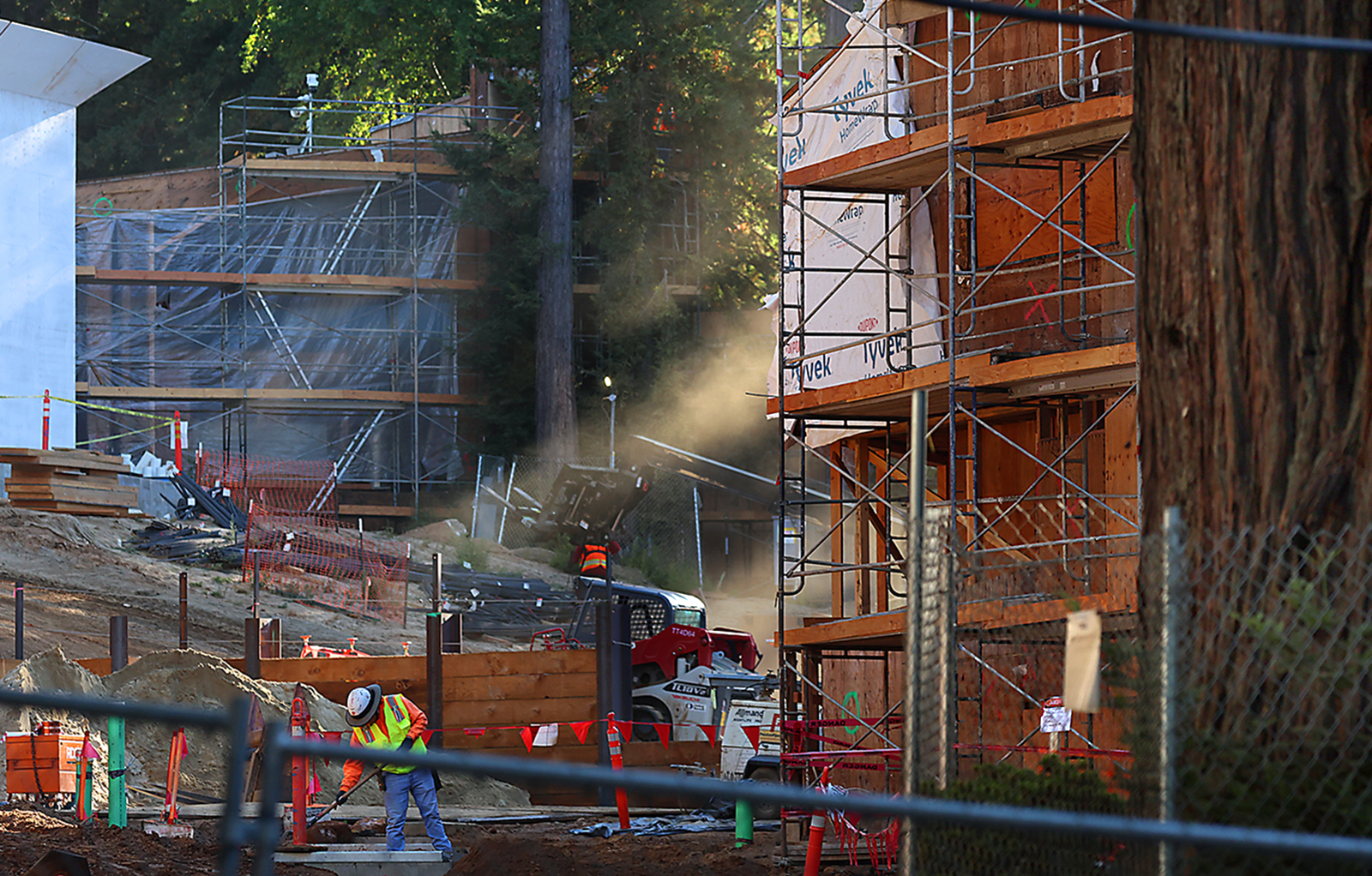
SANTA CRUZ >> In sports, they’d call it a “dynasty” or a “three-peat.” But in this case, there won’t be a celebration.
The Santa Cruz-Watsonville metropolitan district that encompasses Santa Cruz County has been named the most expensive rental market in the nation, according to the National Low Income Housing Coalition’s 2025 Out of Reach report. The recent release of the report marked the third year in a row that the county has been handed the undesirable crown.
Elaine Johnson, executive director of Housing Santa Cruz County, said she wasn’t at all surprised, but conceded that it was immensely dispiriting to see Santa Cruz at the top of the chart yet again.
“This is a No. 1 we don’t want to be,” said Johnson. “This is an all-hands-on-deck kind of time for everyone involved.”
According to the report, a renter in Santa Cruz County needs to earn an hourly wage of $81.21 to comfortably afford a two-bedroom unit at fair market value, or about $4,223 per month. California’s minimum wage is $16.50, meaning a local worker earning that rate would need to work 4.9 full-time jobs to afford to live in the county.
The figure outpaced Santa Cruz’s neighbor and this year’s runner-up, Santa Clara County, by almost $15 per hour. Santa Clara clocked in at $66.27 while the third-place finisher, the San Francisco metropolitan area, managed to drop a notch from last year’s rankings to third place at $63.27.
There were approximately 38,771 renter households in Santa Cruz County between 2019 and 2023, or about 40% of households overall, according to the report. The estimated county mean hourly renter wage is $22.13, which translates to a requirement of 3.7 full-time jobs for a local worker to afford a roof over their head.
The report’s flagship statistic — the one it uses to assign rankings — is known as the “housing wage.” The number is formulated through an estimation of the hourly wage a full-time worker must earn to afford a rental home at fair market value without spending more than 30% of their income. The 30% gross income figure is a key component of the recipe because that is what qualifies as “affordable” according to state housing authorities.
Though she’s glad to see many housing projects sprouting up across the county — specifically shouting-out construction in downtown Santa Cruz, Capitola and in unincorporated territory — Johnson said wages have lagged sorely behind and must be remedied to address the broader housing issues.
“We have to look at the salaries we’re paying people,” said Johnson. “Because you can build homes, but if the paycheck ain’t matching that rent, it’s not going to happen.”
Recent workforce reports found that the county’s population has declined in recent years as local families and seniors on fixed incomes have especially struggled to keep up with the soaring rents and the cost of living.
Not only did the county claim the report’s top spot once again, it beat its own high-water mark from 2024. The county had a housing wage of $77.96 last year and $63.33 in 2023, which was the first year it exceeded all other jurisdictions across the nation.
Santa Cruz County’s rise to the top didn’t occur in a vacuum. Of the top 10 most expensive rental markets in the United States, Boston-Cambridge-Quincy and New York were the only two jurisdictions outside of California.
As a whole, the state’s housing wage sits at $49.61, equating to three full-time jobs, or 120 hours of work per week, at minimum wage to afford a two-bedroom rental at approximately $2,580 per month. Statewide, according to the study, there are more than 5.9 million renter households, or about 44% of households overall.
The latest report arrives as the county’s five local jurisdictions are in the early years of attempting to make good on requirements from the state to dramatically ramp up housing production. According to state housing elements passed in 2023, the county and its four cities must collectively construct almost 13,000 housing units by 2032.
The construction totals represent a major increase from the previous eight-year cycle, which all jurisdictions struggled to meet.
“It’s working with employees, employers … developers, working with our state and local leaders,” said Johnson. “We have to invest in this community and that’s the people. We just have to.”


 PREVIOUS ARTICLE
PREVIOUS ARTICLE
